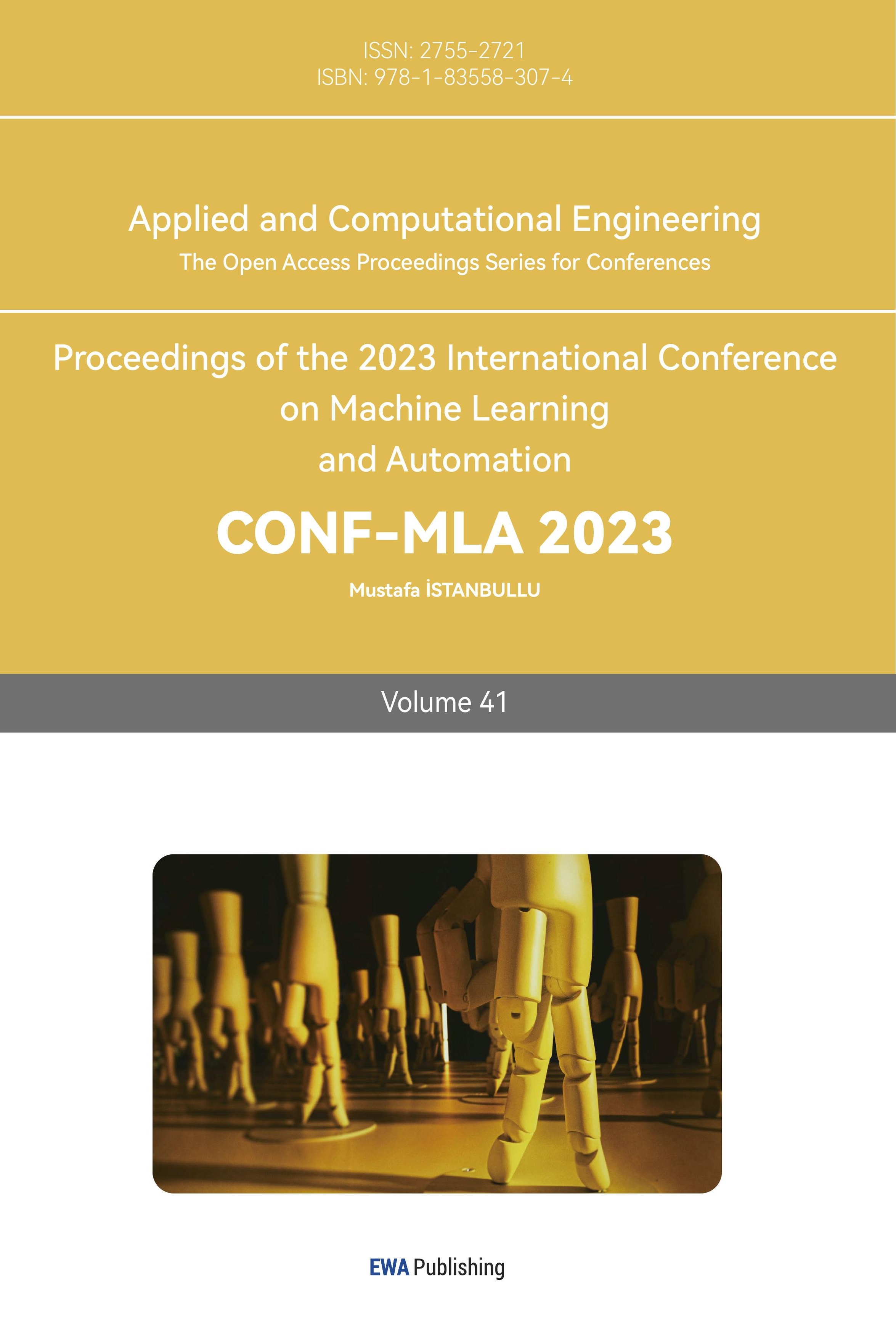References
[1]. Grigorescu, S., Trasnea, B., Cocias, T., & Macesanu, G. (2019). A Survey of Deep Learning Techniques for Autonomous Driving. *Robotics and Autonomous Systems, 10.1002/rob.21918.
[2]. Pomerleau, D. (1989). Alvinn: An autonomous land vehicle in a neural network. Advances in Neural Information Processing Systems, 1.
[3]. Bochkovskiy, A., Wang, C. Y., & Liao, H. Y. M. (2020). Yolov4: Optimal speed and accuracy of object detection.
[4]. Royo, S., & Ballesta-Garcia, M. (2019). An overview of lidar imaging systems for autonomous vehicles. Applied Sciences, 9(19), 4093.
[5]. Chen Yunpei. (2022). An analysis of the moral dilemma under automatic driving. Vehicle Maintenance and Repair (1), 2.
[6]. (2008). Autonomous driving in urban environments: BOSS and the Urban Challenge. Journal of Field Robotics, 25.
[7]. Kockelman, K., & Jin, Y. (2018). Forecasting autonomous vehicles: Opportunities, challenges, and policy implications. Transportation Research Part A: Policy and Practice, 108, 1-18.
[8]. Levinson, J., Aspnes, J., & Thrun, S. (2011). Fully autonomous vehicles: The human factor. IEEE Intelligent Transportation Systems Magazine, 3(4), 58-68.
[9]. Schwarting, W., & Bagnell, J. A. (2017). Planning and decision-making for autonomous vehicles. Annual Review of Control, Robotics, and Autonomous Systems, 1, 187-210.
[10]. Shalev-Shwartz, S., & Shammah, S. (2016). On a formal model of safe and scalable self-driving cars. In Proceedings of the 33rd International Conference on Machine Learning (ICML) (pp. 1113-1122).
Cite this article
Zhai,H. (2024). Intelligent vehicle navigation systems and autonomous driving technology: A comprehensive analysis. Applied and Computational Engineering,41,119-123.
Data availability
The datasets used and/or analyzed during the current study will be available from the authors upon reasonable request.
Disclaimer/Publisher's Note
The statements, opinions and data contained in all publications are solely those of the individual author(s) and contributor(s) and not of EWA Publishing and/or the editor(s). EWA Publishing and/or the editor(s) disclaim responsibility for any injury to people or property resulting from any ideas, methods, instructions or products referred to in the content.
About volume
Volume title: Proceedings of the 2023 International Conference on Machine Learning and Automation
© 2024 by the author(s). Licensee EWA Publishing, Oxford, UK. This article is an open access article distributed under the terms and
conditions of the Creative Commons Attribution (CC BY) license. Authors who
publish this series agree to the following terms:
1. Authors retain copyright and grant the series right of first publication with the work simultaneously licensed under a Creative Commons
Attribution License that allows others to share the work with an acknowledgment of the work's authorship and initial publication in this
series.
2. Authors are able to enter into separate, additional contractual arrangements for the non-exclusive distribution of the series's published
version of the work (e.g., post it to an institutional repository or publish it in a book), with an acknowledgment of its initial
publication in this series.
3. Authors are permitted and encouraged to post their work online (e.g., in institutional repositories or on their website) prior to and
during the submission process, as it can lead to productive exchanges, as well as earlier and greater citation of published work (See
Open access policy for details).
References
[1]. Grigorescu, S., Trasnea, B., Cocias, T., & Macesanu, G. (2019). A Survey of Deep Learning Techniques for Autonomous Driving. *Robotics and Autonomous Systems, 10.1002/rob.21918.
[2]. Pomerleau, D. (1989). Alvinn: An autonomous land vehicle in a neural network. Advances in Neural Information Processing Systems, 1.
[3]. Bochkovskiy, A., Wang, C. Y., & Liao, H. Y. M. (2020). Yolov4: Optimal speed and accuracy of object detection.
[4]. Royo, S., & Ballesta-Garcia, M. (2019). An overview of lidar imaging systems for autonomous vehicles. Applied Sciences, 9(19), 4093.
[5]. Chen Yunpei. (2022). An analysis of the moral dilemma under automatic driving. Vehicle Maintenance and Repair (1), 2.
[6]. (2008). Autonomous driving in urban environments: BOSS and the Urban Challenge. Journal of Field Robotics, 25.
[7]. Kockelman, K., & Jin, Y. (2018). Forecasting autonomous vehicles: Opportunities, challenges, and policy implications. Transportation Research Part A: Policy and Practice, 108, 1-18.
[8]. Levinson, J., Aspnes, J., & Thrun, S. (2011). Fully autonomous vehicles: The human factor. IEEE Intelligent Transportation Systems Magazine, 3(4), 58-68.
[9]. Schwarting, W., & Bagnell, J. A. (2017). Planning and decision-making for autonomous vehicles. Annual Review of Control, Robotics, and Autonomous Systems, 1, 187-210.
[10]. Shalev-Shwartz, S., & Shammah, S. (2016). On a formal model of safe and scalable self-driving cars. In Proceedings of the 33rd International Conference on Machine Learning (ICML) (pp. 1113-1122).









